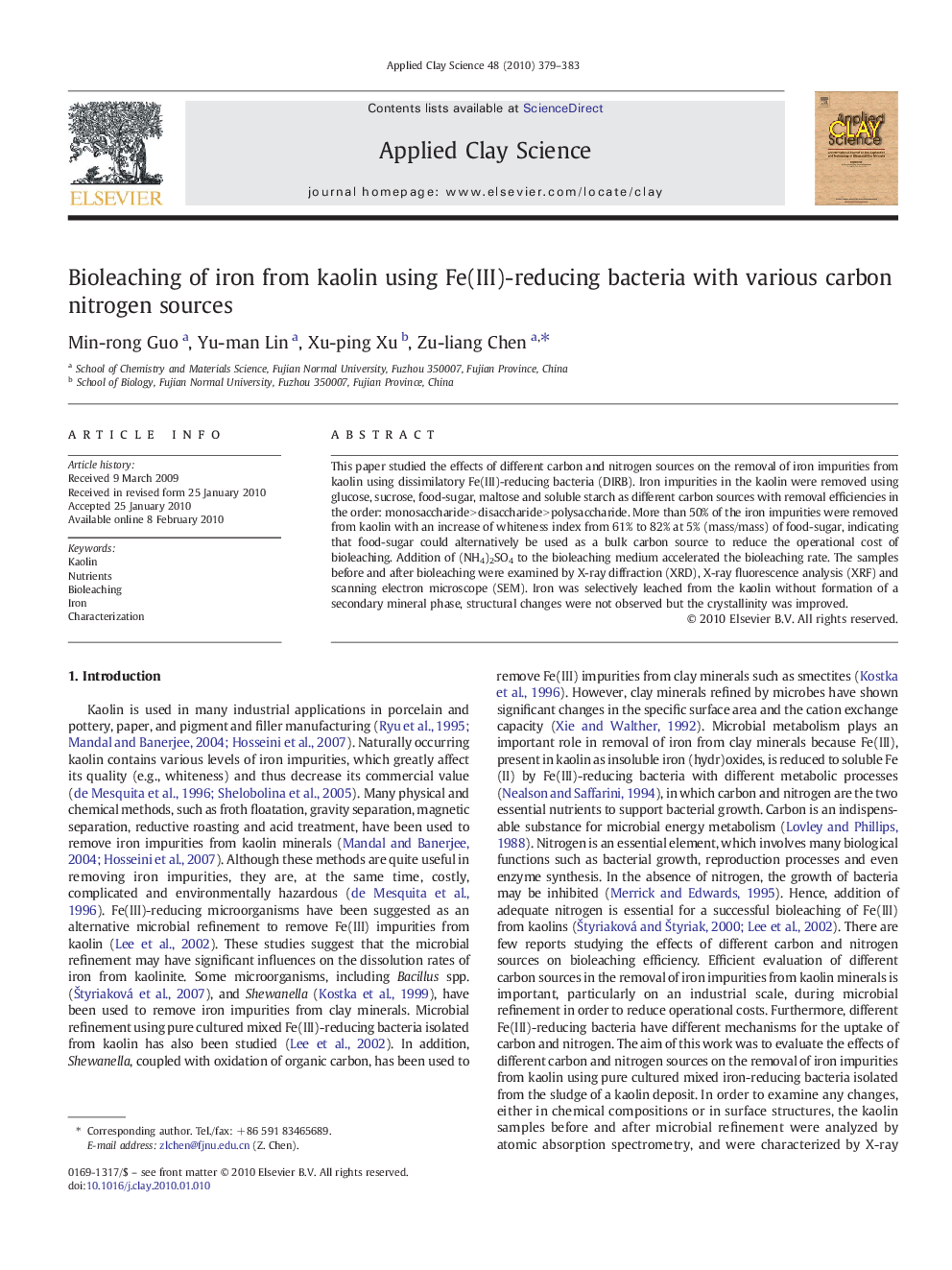| Article ID | Journal | Published Year | Pages | File Type |
|---|---|---|---|---|
| 1695986 | Applied Clay Science | 2010 | 5 Pages |
This paper studied the effects of different carbon and nitrogen sources on the removal of iron impurities from kaolin using dissimilatory Fe(III)-reducing bacteria (DIRB). Iron impurities in the kaolin were removed using glucose, sucrose, food-sugar, maltose and soluble starch as different carbon sources with removal efficiencies in the order: monosaccharide > disaccharide > polysaccharide. More than 50% of the iron impurities were removed from kaolin with an increase of whiteness index from 61% to 82% at 5% (mass/mass) of food-sugar, indicating that food-sugar could alternatively be used as a bulk carbon source to reduce the operational cost of bioleaching. Addition of (NH4)2SO4 to the bioleaching medium accelerated the bioleaching rate. The samples before and after bioleaching were examined by X-ray diffraction (XRD), X-ray fluorescence analysis (XRF) and scanning electron microscope (SEM). Iron was selectively leached from the kaolin without formation of a secondary mineral phase, structural changes were not observed but the crystallinity was improved.
